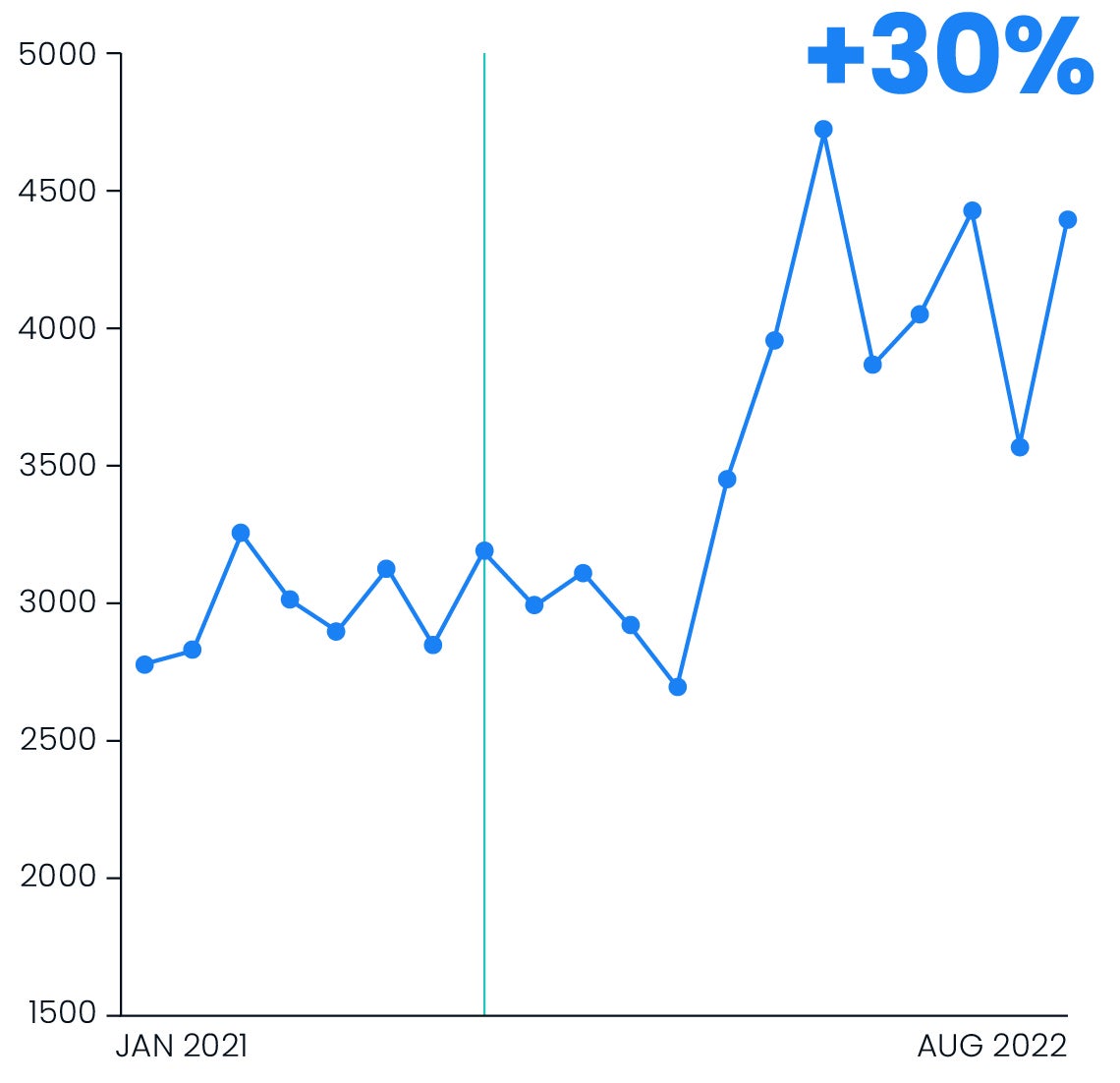Customer
Great Lakes Medical Imaging
Headquarters
Buffalo, New York, United States
Website
Organization type
Radiology practice
Products
The customer
Great Lakes Medical Imaging
Great Lakes Medical Imaging (GLMI) was founded by six radiologists in 2003 to provide Kaleida Health System with comprehensive radiology coverage. With over 170 employees, GLMI has grown to include more than 30 board-certified, fellowship-trained providers, covering general radiology, the radiology subspecialties, and interventional radiology. GLMI currently provides radiology services for six hospitals and has five outpatient locations throughout Western New York. They are Western New York’s only ACR Center of Excellence and are a proud partner of the Buffalo Bills.
The challenge
Automating ordering processes to drive increased volume and improved service
Competition is intense in the Western New York region for GLMI and the provider organizations they serve. Provider organizations face pressure on their reimbursement models and want to optimize the revenue they can drive through their imaging services.
To become a preferred partner for these provider organizations, GLMI must provide quality service with tremendous efficiency. The higher quality of service GLMI can provide, the better they can support their customers’ imaging business and their ability to deliver excellent care.
GLMI knew that to stay competitive in this intense market, their ordering process needed to operate more efficiently, but their process for creating orders and delivering reports relied heavily on manual data entry by their staff. Nick Wetherwax, IT Director at GLMI, wanted to simplify this workflow to reduce human error and develop a scalable process while improving customer experience.
“People want to feel valued and like they are part of something. Now we can remove manual data entry completely and are able to provide value to not only our patients and customers but to our employees as well.”
IT Director
Great Lakes Medical Imaging
He saw an opportunity to improve their order processes by starting with one of their biggest customers, which accounted for 43% of total order volume. In their original workflow, orders were printed or faxed and manually reviewed by GLMI staff. If a patient was new, GLMI staff manually created the patient record and entered the order in the Radiology Information System (RIS). Staff would then schedule the order, scan the prescription in the “documents” section of the order, perform the exam, and then manually send the report to their local health information exchange (HIE), HEALTHeLINK.
Not only was the manual data entry by staff susceptible to human error, but there was also no easy way to check for duplicate patient records. The process was time intensive and lacked a process for change management. GLMI could not customize reporting, and there was no integration between the HIE and electronic health record (EHR) to seamlessly deliver results.
+63%
in time saving
+30%
in order volume
$1,245
saved per month
1,400
duplicate patient records resolved per month
The solution
Corepoint Integration Engine and Rhapsody EMPI
The process was not sustainable, and Wetherwax sought a solution to increase efficiency. GLMI was already using Corepoint Integration Engine and Rhapsody EMPI towards the delivery of more informed clinical decision making and improved care team effectiveness. They used Corepoint to help facilitate integrations for new contracts and EMPI to maintain the integrity of patient information. Wetherwax decided to put these solutions to work to optimize order creation and report delivery.
Wetherwax explains, “I was fortunate that in my case I just needed to check my pockets, because the tools I needed were already there.”
Under their new workflow, provider organizations enter an order into the EHR and the EMPI compares and verifies patient records. “With the Corepoint integration engine we ingest the orders, patient demographics, and use the file protocol feature to accept the PDF prescription from the EHR,” says Wetherwax.
Orders are now automatically scheduled in the GLMI RIS and the GLMI technician performs the exam. Corepoint is then used to send the report back to the ordering physician at the provider organization with an encrypted hyperlink to images. The report is seamlessly ingested into the customer EHR via Corepoint.
The results
63% time saving, and 1,400 potential duplicate patient records addressed each month
GLMI uses Corepoint and EMPI to automate manual tasks, which reduces risk, saves time and money, and provides value to patients, referring physicians, and employees.
GLMI reduced the staff hours required to process orders and provide reporting each month by 63% resulting in a cost saving of $1,245 per month. EMPI detected and helped the team reconcile more than 1,400 potential duplicate patient records per month at GLMI.
“We saw about a 30% increase in the volume of orders our customer would send us after we implemented Corepoint and EMPI,” says Wetherwax, “I can’t help but think that the ease of use on the customer side contributed to the increase in volume we saw. There is no doubt.”
Beyond the quantitative data points, Wetherwax shares that “the quality of work they can now enable their front office staff to do helps us in this time where it is extremely hard to keep employees.”
“People want to feel valued and like they are part of something. Now we can remove manual data entry completely and are able to provide value to not only our patients and customers but to our employees as well,” says Wetherwax.

Looking ahead, Wetherwax has more planned for his team. He looks forward to implementing the new workflow to optimize lab results and rescheduling processes. “We want to continuously improve all our integrations at GLMI,” Wetherwax says. “We can do that now because we have the tools and the process under our control.”
